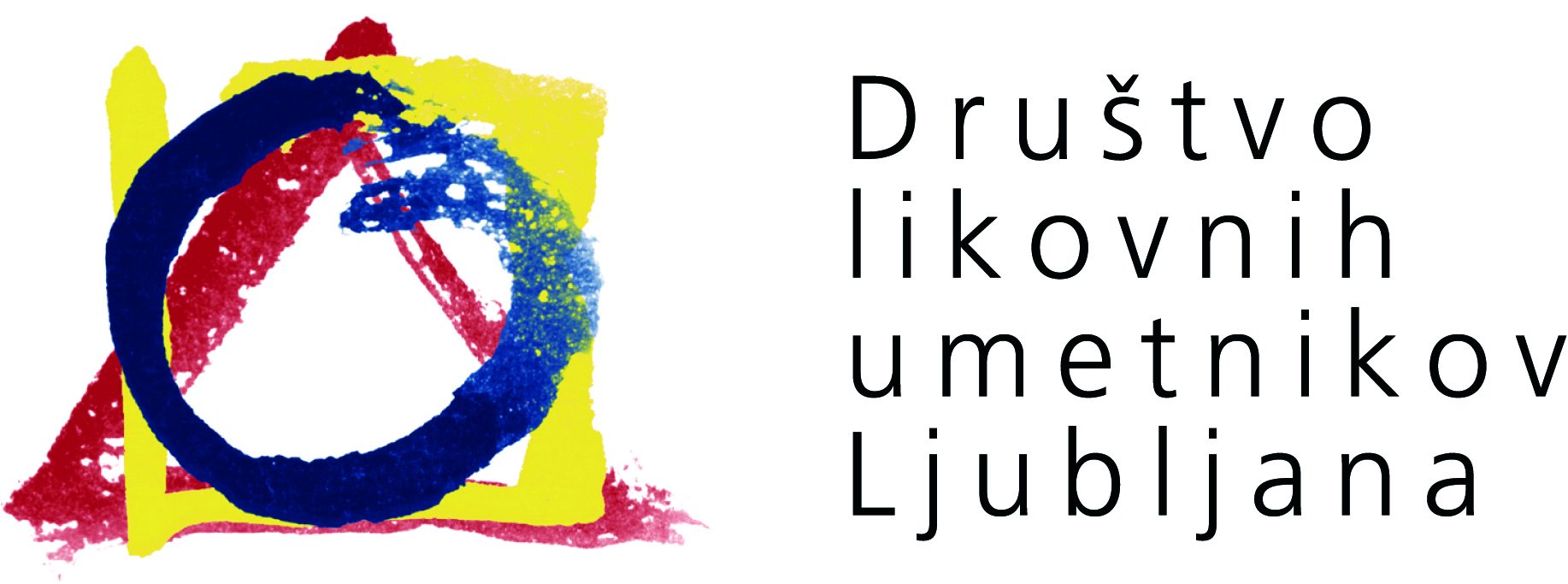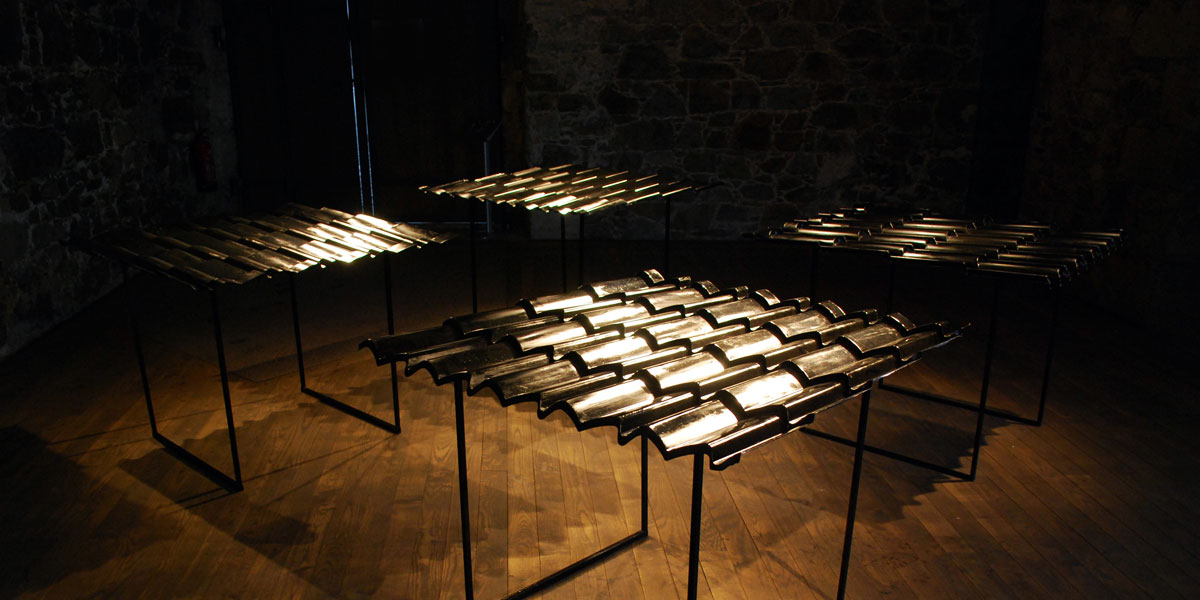FERENC MASSZI ”Barok” /18.1. – 5.2.2017/ Galerija DLUL
FERENC MASSZI ”Barok” /18.1. – 5.2.2017/ Galerija DLUL
BAROK
Vsestranska likovna ustvarjalnost madžarskega slikarja in profesorja Ferenca Masszija se nam razkriva ob njegovem vsebinsko bogatem in tehnično raznolikem umetniškim opusu. Masszijevo ustvarjanje že od njegovih začetkov v osemdesetih letih navdihujejo arhitekturni elementi baroka oz. natančneje, baročne arhitekture. Le-ta mu predstavlja motivno izhodišče za njegova dela, s katerimi se nam v večji meri predstavlja tudi na tokratni razstavi v Ljubljani. S samosvojo likovno govorico upodablja izseke baročne arhitekture cerkvenih notranjščin. Kot močan kolorist se izraža predvsem skozi barvo, s katero na postmodernistični način poudarja arhitekturne detajle oltarjev, stebrov, obokov, ipd. Lahko bi rekli, da so njegove podobe baročne ne samo po motviki, pač pa tudi po načinu upodobitve. Pred gledalcem se namreč razprostirajo dela polna baročne dinamike, slikovitosti in dramatičnosti, ki je bila tako značilna za arhitekturo baročnega sloga, ko so bile stavbe pojmovane kot živ organizem, kjer so bili v nelo- čljivo celoto združeni arhitektura, kiparstvo in slikarstvo. Z vso to dramatičnostjo je arhitektura kot celota vplivala na vernike in v njih prebujala čustva, ki so jih ponesla daleč preko pozemske vsakdanjosti. Masszi v svoja dela s svojimi slikarskimi potezami vna- ša svojevrstno dinamiko, z močno barvo poudarja arhitekturne detajle in igro svetlobe, ki kot nadnaravna vdira v cerkveno notranjost in pred nas na moderni način postavlja zajeto bistvo baročne arhitekture. Ne smemo pozabiti tudi na dela z motiviko vzeto iz narave in živalskega sveta, kjer umetnika ni strah poseči po najbolj močnih barvah in z njimi zarisati zgodbo polno izpovedne moči. V njegovem opusu najdemo tudi dela s figuralno motiviko, za katera dobi velikokrat navdih v mitoloških temah. Tako pred nas postavi podobo ležerno zleknjenega Bakha in v odsevu vode občudujočega se Narcisa, ki delujeta groteskno in na nek način satirično. Prav tako so zanimive obrazne podobe t.i. Karnevalske serije naslikane na lesene diske, ki kot nekakšne maske s svojo ekspresivnostjo in neposrednostjo strmijo v opazovalca in ga nagovarjajo. Masszi pa ni samo ljubitelj likovne umetnosti, temveč mu je blizu tudi svet glasbe in literature, ki ga navdušuje tudi pri njegovem likovnem snovanju. V ekspresivni likovni govorici upodobljene podobe iz baletov Béle Bartóka Čudežni mandarin in Leseni princ ter podoba Mozartovega Don Juana so kljub barvni redukciji na črno-beli kolorit močno izpovedne. Avtor je tudi odličen grafik, ki se nam tokrat predstavlja s serijo dvanajstih najlepših madžarskih pesmi dvanajstih madžarskih pesnikov. V abstraktne podobe je umetnik zajel svojevrstno lirično občutenje in s samosvojo avtorsko poetiko na umetniško izrazen način likovno upodobil bistva posameznih pesmi. Masszijeva umetnost je polna življenja, ki kar buhti pred nami. Zajeto je v vse barve, ki živahno opredeljujejo njegovo delo in skupaj z njegovimi drznimi slikarskimi potezami pred gledalca postavljajo dinamične podobe njegovega ustvarjalnega sveta.
Edita Filo, umetnostna zgodovinarka
BAROQUE
The versatile artistic creativity of the Hungarian painter and professor Ferenc Masszi is revealed in his content-rich and technically diverse artistic oeuvre. Since his beginnings in the 1980s, Masszi’s painting has been inspired by the architectural elements of Baroque or, more precisely, Baroque architecture. In terms of motif, the latter represents the basis for his works, the larger part of which is displayed also at this year’s exhibition in Ljubljana. With his unique artistic language, he depicts the fragments of the Baroque architecture of church interiors. As a strong colourist, Masszi expresses himself mostly by means of colour, with which he emphasizes the architectural details of altars, pillars, arches, etc., in a postmodern manner. His images may be viewed as Baroque not only in terms of motifs, but also as far as their depictions are concerned. The works full of Baroque dynamic, picturesqueness and drama reveal before spectators, the features also common for Baroque architecture, which understood buildings as living organisms uniting architecture, sculpture and painting in an inseparable whole. With all its drama, the architecture as a whole had an impact on the religious people, by awaking feelings which carried them far beyond their earthly everyday lives. With his painting strokes, Masszi brings a singular dynamic to his works, and by using strong colours, he highlights the architectural details and the play of light that is penetrating church interiors as something supernatural. In a modern way, Masszi thus presents us with the essence of Baroque architecture. The works with motifs taken from nature and the animal world must also be taken into consideration, and in them, the artist is not afraid of using the strongest colours possible, with which he outlines a tale full of expressive power. In his oeuvre, the works with figural motifs inspired by mythological themes can also be found. Thus, the images of leisurely recumbent Bacchus or Narcissus, admiring his reflection in the water, are placed before us, functioning grotesquely and somehow satirical. The facial images of the so-called Carnival series painted on wooden discs are also fascinating, staring at spectators and addressing them with its expressiveness and directness, as some sort of masks. Apart from art, Masszi is also closely connected with the worlds of music and literature, which also influence his artistic creation. The images depicted in the expressive language of art and originating from the ballets by Béla Bartók, The Miraculous Mandarin and The Wooden Prince, as well as the image of Mozart’s Don Juan are all strongly expressive, despite the reduction of colour to black and white. The artist also excels in creating graphics; this time, he is presenting the series of twelve most beautiful Hungarian songs by twelve Hungarian poets. In his abstract images, Masszi captured a special lyrical feeling, and with his unique poetics, artistically depicted the essences of the individual poems in an expressive manner. Masszi’s art is full of life, simply bursting in front of us. It is captured in all the colours which vivaciously define his work and with his bold painting strokes, place the dynamic images of his creative world in front of spectators.
Edita Filo, art historian
Ferenc Masszi je rojen leta 1953 v mestu Pápa na Madžarskem. Po končanem študiju na Državni akademiji lepih umetnosti v Budimpešti leta 1982 se je izpopolnjeval tudi na področju pedagogike. Danes deluje kot profesor risanja, slikarstva in grafičnega oblikovanja v Szombathelyju na Madžarskem, kjer živi in ustvarja. Od osemdesetih let dalje se je predstavil tako na številnih samostojnih, kot tudi na skupinskih razstavah. Udeležuje se tudi mnogih likovnih kolonij. Za svoja dela je prejel več nagrad in priznanj.
Ferenc Masszi was born in 1953, in the town of Pápa, Hungary. After completing his studies at the State Academy of Fine Arts in Budapest in 1982, he also studied in the field of pedagogy. Today, he works as a professor of drawing, painting and graphic design in Szombathely in Hungary, where he also lives and creates. Since the 1980s he has presented his works at numerous solo, as well as group exhibitions. He also participates in various art colonies. He has received several awards and recognitions for his works.



